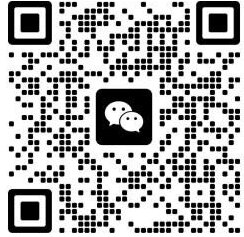Delay lines are critical components in electronic systems, particularly in applications involving signal processing, telecommunications, and radar. The CFR-25JB-52-1K3 is a specific model of a delay line that exemplifies the technology's capabilities and applications. Below, we delve into the core functional technology, applications, and relevant literature surrounding delay lines.
1. Basic Principle: Delay lines function by introducing a predetermined time delay to an input signal. This is essential for synchronizing signals in various applications.
| 2. Types of Delay Lines | |
| 3. Key Parameters | |
| 1. Technical Articles | |
| 2. Application Development Cases | |
| 3. Research Papers |
1. Telecommunications: Delay lines are crucial for synchronizing signals in digital communication systems, managing timing, and reducing jitter, which enhances overall system performance.
2. Signal Processing: In audio and video applications, delay lines are used for effects like echo, time alignment, and phase shifting, improving the quality of the output.
3. Radar Systems: Delay lines are integral to radar technology, enabling accurate distance and speed measurements by processing reflected signals.
4. Control Systems: In feedback control systems, delay lines help manage signal timing, ensuring system stability and performance.
5. Data Acquisition Systems: They synchronize data from multiple sensors, ensuring that data is collected and processed in the correct sequence.
Delay lines, including the CFR-25JB-52-1K3 model, are vital components in various technological applications. Their ability to introduce precise time delays makes them indispensable in fields such as telecommunications, signal processing, and radar technology. By exploring relevant articles and case studies, engineers and researchers can gain valuable insights into the effectiveness and innovative potential of delay lines in modern electronic systems. For further exploration, academic journals, industry publications, and technical white papers are excellent resources to consult.
Delay lines are critical components in electronic systems, particularly in applications involving signal processing, telecommunications, and radar. The CFR-25JB-52-1K3 is a specific model of a delay line that exemplifies the technology's capabilities and applications. Below, we delve into the core functional technology, applications, and relevant literature surrounding delay lines.
1. Basic Principle: Delay lines function by introducing a predetermined time delay to an input signal. This is essential for synchronizing signals in various applications.
| 2. Types of Delay Lines | |
| 3. Key Parameters | |
| 1. Technical Articles | |
| 2. Application Development Cases | |
| 3. Research Papers |
1. Telecommunications: Delay lines are crucial for synchronizing signals in digital communication systems, managing timing, and reducing jitter, which enhances overall system performance.
2. Signal Processing: In audio and video applications, delay lines are used for effects like echo, time alignment, and phase shifting, improving the quality of the output.
3. Radar Systems: Delay lines are integral to radar technology, enabling accurate distance and speed measurements by processing reflected signals.
4. Control Systems: In feedback control systems, delay lines help manage signal timing, ensuring system stability and performance.
5. Data Acquisition Systems: They synchronize data from multiple sensors, ensuring that data is collected and processed in the correct sequence.
Delay lines, including the CFR-25JB-52-1K3 model, are vital components in various technological applications. Their ability to introduce precise time delays makes them indispensable in fields such as telecommunications, signal processing, and radar technology. By exploring relevant articles and case studies, engineers and researchers can gain valuable insights into the effectiveness and innovative potential of delay lines in modern electronic systems. For further exploration, academic journals, industry publications, and technical white papers are excellent resources to consult.










